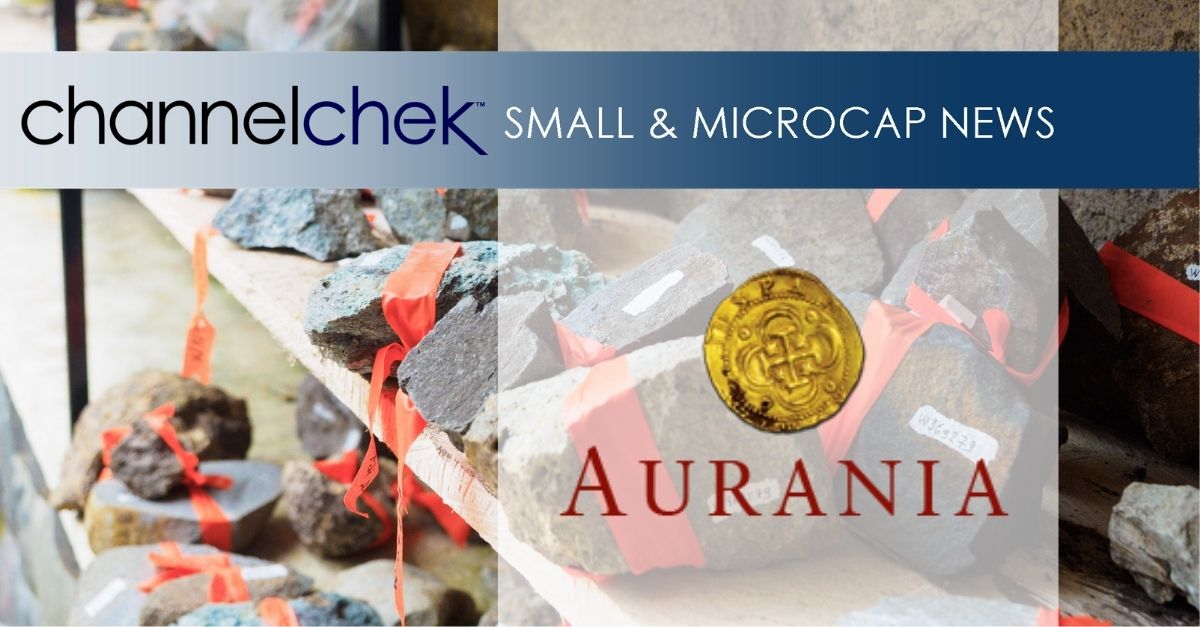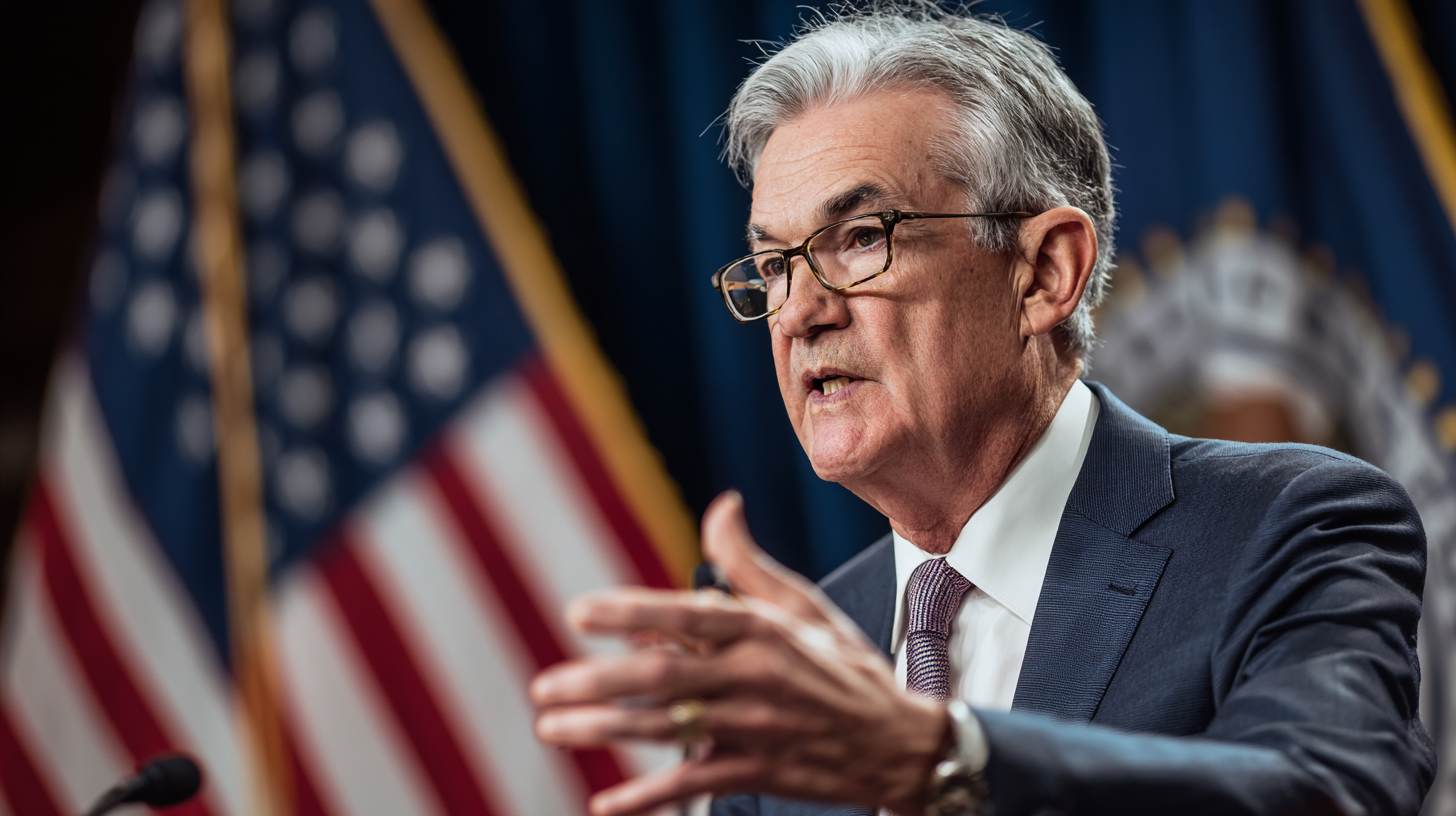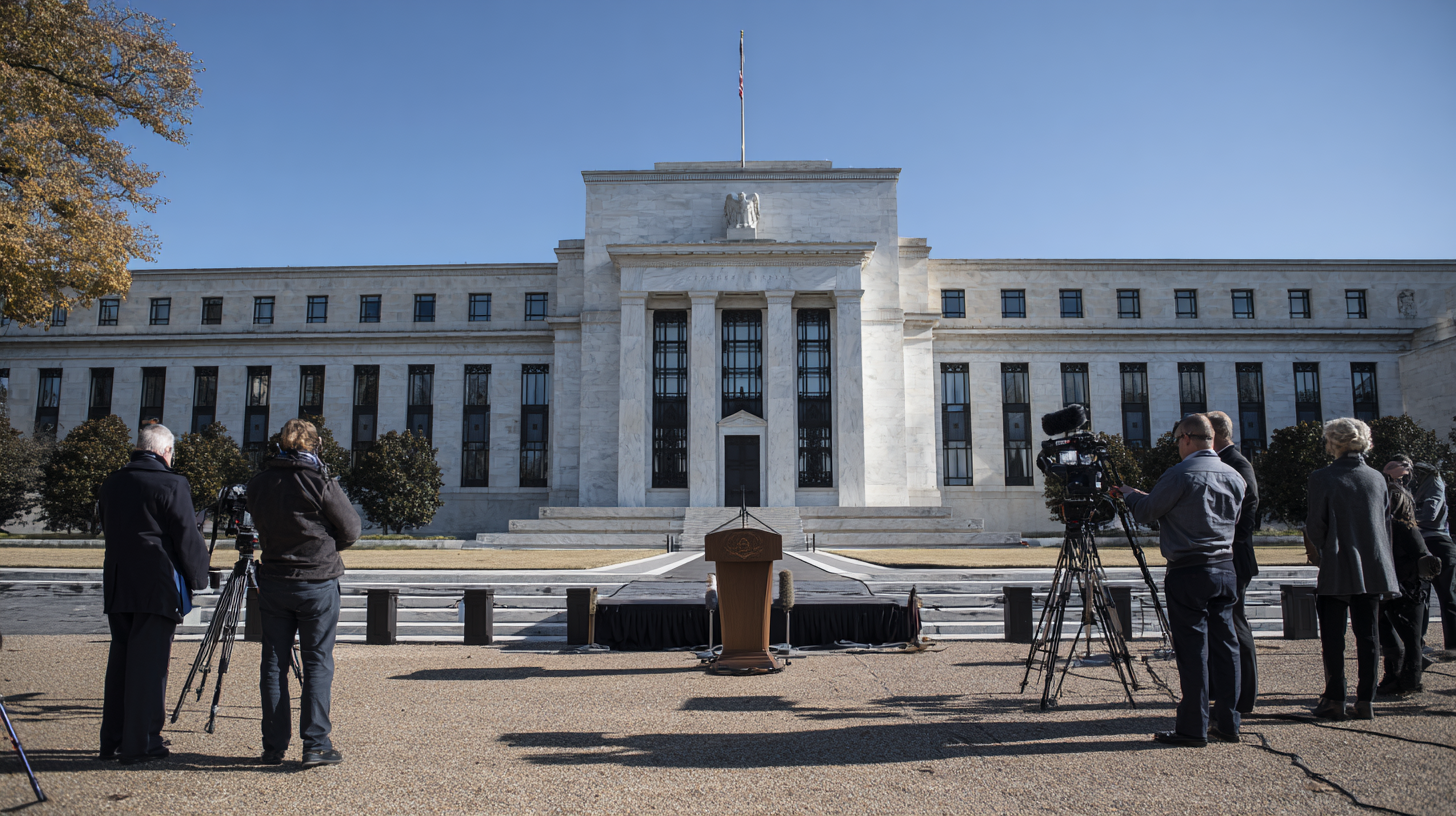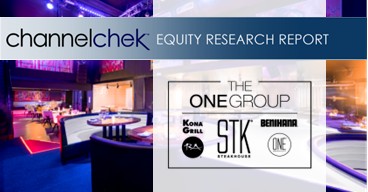
Research News and Market Data on AUIAF
October 30, 2025 7:30 AM EDT | Source: Aurania Resources Ltd.
Toronto, Ontario–(Newsfile Corp. – October 30, 2025) – Aurania Resources Ltd. (TSXV: ARU) (OTCQB: AUIAF) (FSE: 20Q) (“Aurania” or the “Company”) provides a detailed summary of recognized areas of enhanced prospectivity on its Cutucu Project in southeastern Ecuador amidst changing political conditions in the country. The Company also confirms its focus on gold and strategic metals projects in Europe and other opportunities abroad.
Highlights:
- Since 2017, through diligent exploration using modern methods, the Company has discovered several highly prospective gold and copper exploration targets in the Cutucu region in southeastern Ecuador
- Led to the area by in-depth research of the legendarily rich gold mines of the “Lost Cities” of the Cutucu Cordillera over ten years of archival investigation, the Company determined that significant gold potential existed in the area
- Several “blind” epithermal gold targets, similar to the those that led to the discovery of the world-class Fruta del Norte gold deposit in southern Ecuador, have been delineated in the region, including Crunchy Hill, Kuri-Yawi and others
- Below epithermal targets, several potentially significant porphyry copper targets have been identified using newly reprocessed MobileMT geophysical data
- Sediment-hosted style copper mineralization, like that of the very large and high-grade Central African Copper Belt, has been identified at the 14 km-long Tsenken prospect
- Due to the evolving political situation and challenging business conditions for exploration companies in Ecuador, the Company has chosen to suspend all activities and take a “wait and see” approach
- The Company remains optimistic about its strategy to focus its efforts on projects for gold and strategic metals in Europe, along with potential opportunities elsewhere
When the Company acquired its initial 42 mineral concessions in the Cutucu region from Dr. Keith Barron in 2017, little was known of the geologic potential of the area since the centuries-old activities of the Conquistadors. The Shuar people, who historically inhabited the Cutucu region, did not traditionally engage in gold mining before the arrival of the Spanish. Aurania initiated modern exploration in the area, including an airborne Mobile MagnetoTellurics (MobileMT) geophysical survey in 2021. The data from that survey was reprocessed using new techniques in 2024 and 2025, revealing highly prospective new anomalies at the Awacha target (see press release dated June 27, 2025). While the state of knowledge of these areas was very preliminary in nature in 2021, now, with the benefit of hindsight from the new data acquired utilizing new technologies, age-dating, geological mapping and sampling over the last four years, a much more coherent picture has emerged. In addition, much information has been released in the public filings of Lundin Gold and Solaris from the adjacent and contiguous Cordillera del Condor, immediately south of Aurania’s block of concessions, providing further geological context for Aurania’s target areas.
Geological Context of Aurania’s Cutucu Project
The Cordillera de Cutucu and the Cordillera del Condor are part of a Jurassic back-arc rift system which extends roughly north-south through the whole of Ecuador. In the two Cordilleras, the fault system which demarcated the Jurassic rift basins was later reactivated and reversed in the Tertiary, forming the height-of-land characteristic of the Cordilleras. The mineralizing systems were then unroofed by erosion and exposed. In the case of the Condor, the erosion and uplift have removed several kilometres of sedimentary cover, exposing many copper porphyry systems and generating large areas of placer gold mineralization where epithermal vein systems have been entirely eroded away. In the Cutucu, the sedimentary cover over the mineralizing systems remains largely intact, so that the very tops of epithermal systems comprising hotspring sinters and siliceous terraces are preserved; the main body of the epithermal systems, as well as likely porphyry systems, remain preserved at depth. Additionally, the Cutucu shows abundant evidence that the fault basins contained playa lakes that evaporated to dryness, depositing thick layers of salt and gypsum. Conditions became favourable for the mobilization of copper and silver in saline fluids from volcanic rocks into shales and sandstones. This combination of unique geological conditions deposited and preserved extensive sheets of copper-silver mineralization in sediments, akin to Kamoa-Kakula, Dzezkazgan, and the Kupferschiefer. To date, this type of sediment-hosted style copper mineralization remains untested by drilling.
Blind Deposit Exploration
In the Cutucu, the porphyry and epithermal systems outcrop rather poorly or not at all. Their presence is not obvious but is revealed by geophysics and geochemistry. The world-class Fruta del Norte (FDN) gold-silver deposit, approximately 100 km to the south in the more deeply eroded Condor, was fortuitously preserved in a down-dropped graben block and covered by a Cretaceous sandstone which protected it from erosion. This was a “blind discovery” since there was very little gold on the surface. Its discovery by Aurania’s predecessor company Aurelian Resources, founded by Dr. Barron, came through the application of geochemical sampling for pathfinder-type elements, i.e., other metals which occur in gold systems but are much more abundant and more easily detected than gold itself. Early application of this methodology in the Cutucu led Aurania to the discovery of Crunchy Hill, Kuri-Yawi and other epithermal prospects. Actively artisanal-mined gold alluvials at Patuca, just outside the Aurania concession block, were determined to be derived from eroded early Cretaceous paleoplacers; in other words, the placer gold accumulations were more or less coincident in time with the epithermal vein system formation some 230 million years ago. This suggests that at least some of the sinter systems spread out over 30 kilometres within the Aurania claims could host another bonanza-grade type FDN.
Prospective Graben Settings
Intensive geological mapping has shown there are at least two, and possibly three, down-dropped grabens arrayed north-south through the Project. These became apparent after very careful reconnaissance mapping and reinterpretation of the biostratigraphy of the fossil endowment. Grabens form through extensional forces in the earth that pull apart the rocks horizontally. The central block will fall vertically into the space created and a deep canyon may result. The extensional spreading allows intrusion of porphyry-producing magmas, producing hot hydrothermal fluids that can pond in the dilatant zones: grabens are recognized as one of the most productive mineralizing environments.
Aurania Among First Industry Users of MobileMT
At the time of the initial MobileMt survey, Electromagnetic (EM) data inversion was performed using a one-dimensional (1D) algorithm. In recent years, EM inversion technology has significantly improved, particularly for areas with rugged terrain. As a result, Aurania recommissioned Expert Geophysics Surveys Inc. to reprocess the 2021 MobileMT data using the latest 2D inversion technology. The 2.5D inversion code that was applied is more objective and comprehensive than the previous 1D technology, as it considers the actual topography of the area being investigated, yielding robust lateral and vertical resolution, resulting in more accurate mapping of the subsurface conductivity, which may be related to mineralization.
Aurania was one of the very first companies worldwide to adopt MobileMT, but there were few publicly-available examples to demonstrate the expected geophysical signature of porphyry deposits using the MobileMT method. For a “real world” test and ground truthing, Aurania had the contractors fly over the known Panantza and San Carlos porphyry copper bodies outside of our concessions. These were proven deposits with extensive drilling. The MobileMT results generated outstanding signatures, with close spatial correlation of the ore bodies with strongly anomalously geophysical signatures. Based on this test study we flew large portions of our project using the MobileMT method, yielding several anomalies. The mineralized area of the Panantza/San Carlos test grid had only minor topographic relief, however, unlike our area in the much more rugged Cutucu. The primitive 1-D data inversion available at the time was unable to correct for the more rugged terrain, and we later drilled some targets that subsequently proved to be spurious. We have great confidence in the improved 2.5-D reprocessing of our data to produce reliable results: the new processing method accounts for the more significant terrain correction, and the new anomalies agree well with known geology, other geophysics and the porphyry copper exploration model.
The Lost Cities Cutucu Project
Aurania’s Lost Cities Cutucu Project was an outgrowth of historical research in the Archive of the Indies, Seville, and the Vatican Library, which suggested that the rich gold mines of Logroño de Los Caballeros and Sevilla del Oro, active circa 1565-1605 were in the Cutucu Cordillera. The Company used an extremely innovative approach with Metron Inc. of Reston, Virginia, a company that uses Bayesian Theory in geo-location of lost objects, including downed aircraft. Metron successfully located Logroño, which is a large alluvial plain along the Rio Santiago, just off our concession block. This was confirmed by the recovery of large amounts of alluvial gold by our geologists. We believe that this gold deposit was in part fed from our property. Attempts to partner with the construction company owning the gold alluvial area have to date been unsuccessful. Sevilla del Oro remains “lost” but it is believed to be in the drainage basin of the Pastaza River and outside our concessions. Aurania can find no evidence of past mining activity on the copper-silver, and lead-zinc-silver showings on our concessions. Dr. Barron’s experience in Guatemala, Mexico and Colombia suggests that the Colonial Spanish would have sunk shafts and adits on any of these areas had they been known at that time. We believe that these are virgin areas. The road network detected on the concessions by LiDAR surveying is almost certainly pre-Colombian and could be many thousands of years old and related to the lost culture in the Upano Valley, north of Macas. It appears that the pre-Shuar inhabitants mined and transported salt along these roads.
Aurania’s Target Areas in the Cutucu
Awacha, Sunka, Kirus, Awacha Norte
These prospect areas were initially revealed from a 400 metre-spaced airborne magnetometer and radiometric survey carried out in 2017. To date, Awacha has been the focus of our exploration efforts, but all prospects remain undrilled. Awacha and Awacha North appear to be in an area of uplift where early Jurassic rock is at surface. These prospects do not outcrop well, being covered by a thin stratum of mudstone, which in the ravines is eroded away sufficiently to expose porphyry intrusives. In addition, stream sediment sampling produced wide anomalous areas of several kilometres extent where copper and molybdenum were elevated. At both Awacha and Awacha North, zones of classic-type QSP (quartz-sericite-pyrite) alteration and “D-type” mineralized veinlets with molybdenite and chalcopyrite are present. D-type veins are very distinctive with a medial septum of sulphide, only seen in magmatic systems like porphyries. Awacha has been mapped in detail using the Anaconda mapping method. The recasting of the MobileMT survey has shown possible presence of six discrete porphyry bodies (see press release dated June 27, 2025). Awacha North has been cursorily mapped but not explored with MobileMT. We believe that Awacha and Awacha Norte represent multiple potential Cu-Mo porphyry bodies in a cluster, much like Solaris’ Warintza area, located south of Aurania’s concessions. Sunka and Kirus areas have yielded porphyry-style mineralization but have not been mapped in detail.
Crunchy Hill, Kuri-Yawi, Apai, Kuripan etc.
This collection of targets has high potential for epithermal-type gold-silver veining. These targets were discovered fortuitously very early in Aurania’s exploration efforts in the area, near the paved road where excellent access facilitated sampling. Apart from Crunchy Hill, all contain siliceous hotspring sinter on the surface, with evidence of reeds and other plants entombed in the splash zone of geysers. Very distinctive “geyserite” has also been found. This is a rock of solidified tiny spheres of quartz that represent sand grains on which silica nucleated as they were tumbled in the convecting hotspring. Hotspring-type rocks are located immediately above the ore zone at FDN, and Aurania staff were considerably encouraged by their discovery. Epithermal banded veins have been encountered by drilling, but fluid inclusion paleothermometry indicated that trapping temperatures were low, though salinities high. This means we were drilling on the periphery of the systems or not deep enough where the mineralizing fluids had already deposited their metals and were cooling. Only determined and persevering exploration with the drill will guarantee discovery. The results of an Induced Polarization (IP) Survey were ambivalent. Recasting of the MobileMT over Kuri-Yawi, however, strongly suggests two areas of potential sulphide flooding related to epithermal processes, as well as a deeper zone that bears the signature of a buried porphyry body. The Crunchy Hill area has not been covered by MobileMT. Crunchy Hill is a zone of disseminated sulphide with minor epithermal veining, which is enriched in the pathfinder elements Ag, As, Mn, Sb, Se, Tl, and Hg. Further geophysical surveys and a drilling campaign are required.
Tsenken
Tsenken was a wholly unexpected target area. Early in the exploration, the field assistants returned from the field with specimens over half a metre in size and more than 50 kg weight of significant amounts of chalcocite (a copper-rich (80% Cu) sulphide mineral) in bedded shales and sandstones. This sediment-hosted style of high-grade copper-silver mineralization, common to the large and high-grade copper deposits of Central Africa and the Kupferschiefer, was previously unrecognized in Ecuador and represent a compelling new exploration target. Informed by our early version of the MobileMT over this area we drilled several targets that unfortunately turned out to be duds. The problem was a misinterpretation of the sedimentary stratigraphy in this area, which was only sorted out by Professor Gregor Borg and Consultant Cristian Vallejo after a number of holes had been drilled. These sorts of copper deposits occur in areas of maximum fluid flow where there are favourable and reactive host rocks. By initiating a serious study of analogues from Ivanhoe Mines’ Kamoa-Kakula Deposit in the Central African Copper Belt, we were very excited to discover a large arcuate zone of high conductivity that parallels the surface trace of a major fault and subcropping Santiago Formation for 14 kilometres. The Santiago is a pyritic carbonaceous mudstone unit which could be an analogue to the chemically reactive pyritic diamictite that hosts most of the copper at Kamoa-Kakula. The coincidence of a strongly copper-mineralized rock indicating the presence of an effective mineralizing system, subsurface conductivity anomaly associated with a known fault/plumbing system and receptive host stratigraphy makes Tsenken highly prospective. This target remains undrilled.
Tiria-Shimpia
The Tiria-Shimpia zone appears to be localized along the east side of a graben fault and is hosted by limestone. The mineralization consists of semi-massive and vein-hosted Zn-Pb-Ag-Ba-bearing minerals and could represent the distal expression of the Tsenken copper-silver system. Extending for over nine kilometres and only partly covered by the MobileMT survey, it has been explored with four drill holes, all of which encountered mineralization.
Tatasham
The Tatasham target corresponds to a magnetic low lying within a major magnetic high anomaly. This magnetic low is interpreted as a classic de-magnetization of the rock by hydrothermal alteration related to the core of a porphyry system. The Anaconda mapping conducted in the area confirmed the presence of an intensive hydrothermal alteration, which justified a scout drilling campaign in 2023. The third drill hole intersected a thick silicified zone interpreted as the distal portion of an epithermal system at the same stratigraphic level as the sinter horizon. This indicates that we are in the upper level of the epithermal-porphyry system with the Tatasham prospect representing an epithermal target likely overlying a porphyry system at depth. Follow-up field verification confirmed the presence of sinters and extensive hydrothermal breccias. The thickness of the near-surface silicified system is comparable to that of Fruta del Norte and is situated within a small graben of similar age. Additional surface exploration is warranted to delineate the sinter zone and define targets for the next phase of drilling.
Conclusion
During the last two years, Aurania has engaged with four major companies in discussions of potential collaboration. In each case, the due diligence phase has taken more than six months. Two field visits were made, and a third was cancelled due to the assassination of a political candidate in the lead-up to elections. In each case, Aurania was praised for choosing to keep the large landholding intact, maximizing the chances for discovery, and for the diligent exploration work and positive engagement with the Shuar stakeholder community in Ecuador. Though the exploration market appears to be improving due to rising metal prices, junior explorers, particularly in greenfield areas, still struggle to raise adequate project funding. Aurania’s technical team are convinced that the Cutucu land package is one of the last areas left of significant mineral potential in the South American Cordillera that may have the potential to yield several new mines. Pioneering is not easy, nor does it yield the quick results preferred by investors and other stakeholders. It requires patience and perseverance, but the rewards can be spectacular.
Current Situation in Ecuador and Recently Imposed Mining Service Fee
As announced in our press releases July 28, 2025 and June 11, 2025, the Company has been assessed a $24.1 million USD mining service fee (the “TASA”) annually by the Government of Ecuador, ostensibly to fight illegal mining in the country. This is an industry-wide fee and is assessed by area under concessions. Aurania has no illegal mining on the concessions; nevertheless, the demand still stands. Comments have appeared in the Mining Journal, Bloomberg and Forbes regarding the potential damage the TASA would cause to the exploration industry in Ecuador and to date, we are aware of seven Constitutional Challenges that have been brought about, questioning its legality.
The recent initiatives presented by President Noboa have triggered conflict with the Court and widespread social unrest in Ecuador. This has resulted in clashes, nationwide protests, road closures, direct attacks on the President, and significant disruptions across multiple regions. Given the current circumstances, the Company has chosen to suspend all activity in Ecuador and take a “wait and see” attitude. In the meantime, the Company remains optimistic about its strategy to focus its efforts on projects for gold and strategic metals in Europe, along with potential opportunities elsewhere.
Qualified Persons:
The geological information contained in this news release has been verified and approved by Aurania’s VP Exploration, Mr. Jean-Paul Pallier, MSc. Mr. Pallier is a designated EurGeol by the European Federation of Geologists and a Qualified Person as defined by National Instrument 43-101, Standards of Disclosure for Mineral Projects of the Canadian Securities Administrators.
About Aurania
Aurania is a mineral exploration company engaged in the identification, evaluation, acquisition, and exploration of mineral property interests, with a focus on precious metals and copper in South America and critical energy and precious metals in Europe.
Information on Aurania and technical reports are available at www.aurania.com and www.sedarplus.ca, as well as on Facebook at https://www.facebook.com/auranialtd/, Twitter at https://twitter.com/auranialtd, and LinkedIn at https://www.linkedin.com/company/aurania-resources-ltd-.
For further information, please contact:
| Carolyn Muir VP Corporate Development & Investor Relations Aurania Resources Ltd. (416) 367-3200 carolyn.muir@aurania.com |
Neither the TSX Venture Exchange nor its Regulation Services Provider (as that term is defined in the policies of the TSX Venture Exchange) accepts responsibility for the adequacy or accuracy of this release.
This news release contains forward-looking information as such term is defined in applicable securities laws, which relate to future events or future performance and reflect management’s current expectations and assumptions. The forward-looking information includes: that the company is focused on gold and strategic metals projects in Europe and other opportunities abroad, the possibility that at least some of the Aurania sinter systems spread out over 30 kilometres could host another bonanza-grade type FDN, that Aurania’s technical team are convinced that the Cutucu land package is one of the last areas left of significant mineral potential in the South American Cordillera that may have the potential to yield up several new mines, Aurania’s objectives, goals or future plans, statements, exploration results, potential mineralization, the tonnage and grade of mineralization which has the potential for economic extraction and processing, the merits and effectiveness of known process and recovery methods, the corporation’s portfolio, treasury, management team and enhanced capital markets profile, the estimation of mineral resources, exploration, timing of the commencement of operations, the commencement of any drill program and estimates of market conditions. Such forward-looking statements reflect management’s current beliefs and are based on assumptions made by and information currently available to Aurania, including the assumption that, there will be no material adverse change in metal prices, all necessary consents, licenses, permits and approvals will be obtained, including various local government licenses and the market. Investors are cautioned that these forward-looking statements are neither promises nor guarantees and are subject to risks and uncertainties that may cause future results to differ materially from those expected. Risk factors that could cause actual results to differ materially from the results expressed or implied by the forward-looking information include, among other things: failure to identify mineral resources; failure to convert estimated mineral resources to reserves; the inability to complete a feasibility study which recommends a production decision; the preliminary nature of metallurgical test results; the inability to recover and process mineralization using known mining methods; the presence of deleterious mineralization or the inability to process mineralization in an environmentally acceptable manner; commodity prices, supply chain disruptions, restrictions on labour and workplace attendance and local and international travel; a failure to obtain or delays in obtaining the required regulatory licenses, permits, approvals and consents; an inability to access financing as needed; an inability to fund or extend the payment of Ecuador mineral concession fees which are due and payable and could result in the forfeiture of such mineral concessions; an inability to fund the administrative fees imposed by the Ecuadorian Control and Regulation Agency (ARCOM for its Spanish acronym) on the mining sector which could render the Company insolvent; a general economic downturn, a volatile stock price, labour strikes, political unrest, changes in the mining regulatory regime governing Aurania; a failure to comply with environmental regulations; a weakening of market and industry reliance on precious metals and base metals; and those risks set out in the Company’s public documents filed on SEDAR+. Aurania cautions the reader that the above list of risk factors is not exhaustive. Although the Company believes that the assumptions and factors used in preparing the forward-looking information in this news release are reasonable, undue reliance should not be placed on such information, which only applies as of the date of this news release, and no assurance can be given that such events will occur in the disclosed time frames or at all. The Company disclaims any intention or obligation to update or revise any forward-looking information, whether as a result of new information, future events or otherwise, other than as required by law.
SOURCE: Aurania Resources Ltd.














